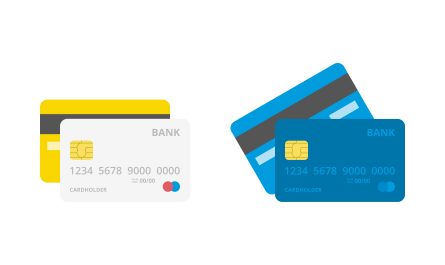In today’s digital age, online shopping has become the norm, offering convenience and accessibility to consumers worldwide. However, alongside the benefits come a host of challenges, particularly when it comes to online payments. From transaction declines to security concerns, encountering payment problems can be frustrating for both customers and merchants alike. In this guide, we’ll delve into five common online payment issues and provide practical solutions to help you overcome them.
1. Payment Declines: Understanding Transaction Failures
When making online purchases, one of the most common frustrations is encountering payment declines. This can happen for various reasons, including insufficient funds, incorrect card details, or fraud alerts triggered by your bank. To resolve this issue, start by double-checking your card details and ensuring there are sufficient funds in your account. If the problem persists, contact your bank or card issuer for assistance or try using an alternative payment method.
2. Security Concerns: Ensuring Safe Transactions
Security is paramount when it comes to online payments, and concerns about data breaches and identity theft are valid. To safeguard your personal and financial information, opt for reputable online retailers with secure payment gateways. Additionally, enable two-factor authentication for added security and monitor your account activity regularly for any suspicious transactions. By taking these precautions, you can mitigate the risk of falling victim to online fraud.
Read more: What is VPA in UPI Payments and what does it mean?
3. Payment Gateway Errors: Resolving Technical Glitches
Another common issue encountered during online checkout is payment gateway errors. These errors can manifest as messages such as “Transaction Timed Out” or “Gateway Unavailable,” disrupting the payment process. To address this problem, try refreshing the page, clearing your browser cache, or switching to a different payment method. If the issue persists, contact the merchant’s customer support for assistance or try completing the transaction on a different device.
4. Fraudulent Transactions: Detecting and Preventing Unauthorized Charges
Fraudulent transactions are a significant concern for both consumers and merchants, with unauthorized charges posing a risk to financial security. Signs of fraudulent activity include unfamiliar purchases, unknown charges on your account, or suspicious login attempts. To prevent fraud, review your account statements regularly, set up transaction alerts, and use anti-fraud tools provided by your bank or payment provider. If you suspect fraudulent activity, report it immediately to your bank and take steps to secure your accounts.
5. Refund Delays: Addressing Issues with Reversed Payments
Refund delays can be frustrating for customers awaiting reimbursement for returned or cancelled orders. Delays may occur due to processing times, bank clearance procedures, or merchant policies. If you’re experiencing refund delays, start by contacting the merchant’s customer support to inquire about the status of your refund. If the refund has been processed but not yet reflected in your account, follow up with your bank or payment provider to expedite the clearance process. In cases of unresolved disputes, consider escalating the matter to relevant authorities for assistance.
Read more: Get cashback on the first three UPI transactions

What are some tips to avoid UPI payment failures?
Avoiding UPI (Unified Payments Interface) payment failures is essential for ensuring smooth and hassle-free transactions. Here are some tips to help you avoid UPI payment failures:
- Check Beneficiary Details: Always double-check the beneficiary details, including the UPI ID, mobile number, or bank account number, before initiating the payment. Entering incorrect details can lead to payment failures or even result in the transfer of funds to the wrong recipient.
- Ensure Sufficient Balance: Make sure that your bank account linked to the UPI app has sufficient funds to cover the transaction amount. Insufficient balance is one of the primary reasons for payment failures.
- Stable Internet Connection: Ensure that you have a stable internet connection before initiating a UPI payment. Payment failures can occur if there are connectivity issues or if the transaction times out due to poor network coverage.
- Use Secure Apps: Only use trusted and secure UPI apps provided by verified banks or financial institutions. Avoid downloading UPI apps from unofficial sources or third-party websites to minimize the risk of fraudulent transactions. The Airtel Thanks UPI app is one of the best for all your recharges, utility bill payments, managing your connections,
- Keep UPI PIN Secure: Protect your UPI PIN and never share it with anyone. Memorize your UPI PIN and avoid storing it on your device or sharing it via messages or emails.
- Update UPI App: Regularly update your UPI app to the latest version available. App updates often include bug fixes and security patches that can help prevent payment failures and protect against vulnerabilities.
- Verify Transaction Limits: Be aware of the transaction limits set by your bank or UPI app for various types of transactions, such as daily transfer limits and per-transaction limits. Exceeding these limits can result in payment failures.
- Check Transaction Status: After initiating a UPI payment, check the transaction status to ensure it is successful. If the transaction fails, follow up with your bank or UPI app provider to determine the cause and resolve any issues.
- Keep UPI ID Confidential: Avoid sharing your UPI ID or QR code publicly or with unknown individuals. Your UPI ID is linked to your bank account and can be used to initiate transactions, so it’s essential to keep it confidential to prevent unauthorized access.
- Contact Customer Support: If you encounter frequent UPI payment failures or have difficulty resolving a failed transaction, contact the customer support team of your bank or UPI app provider for assistance. They can help troubleshoot the issue and provide guidance on how to avoid future payment failures.
In the world of online payments, encountering challenges is inevitable. However, by understanding the common issues outlined in this guide and implementing the suggested solutions, you can navigate the online payment process with confidence and peace of mind. Remember to prioritise security, stay vigilant for signs of fraudulent activity, and seek assistance when needed to ensure a smooth and secure online payment experience.


 Get App
Get App  Airtel Store
Airtel Store  Login
Login 


